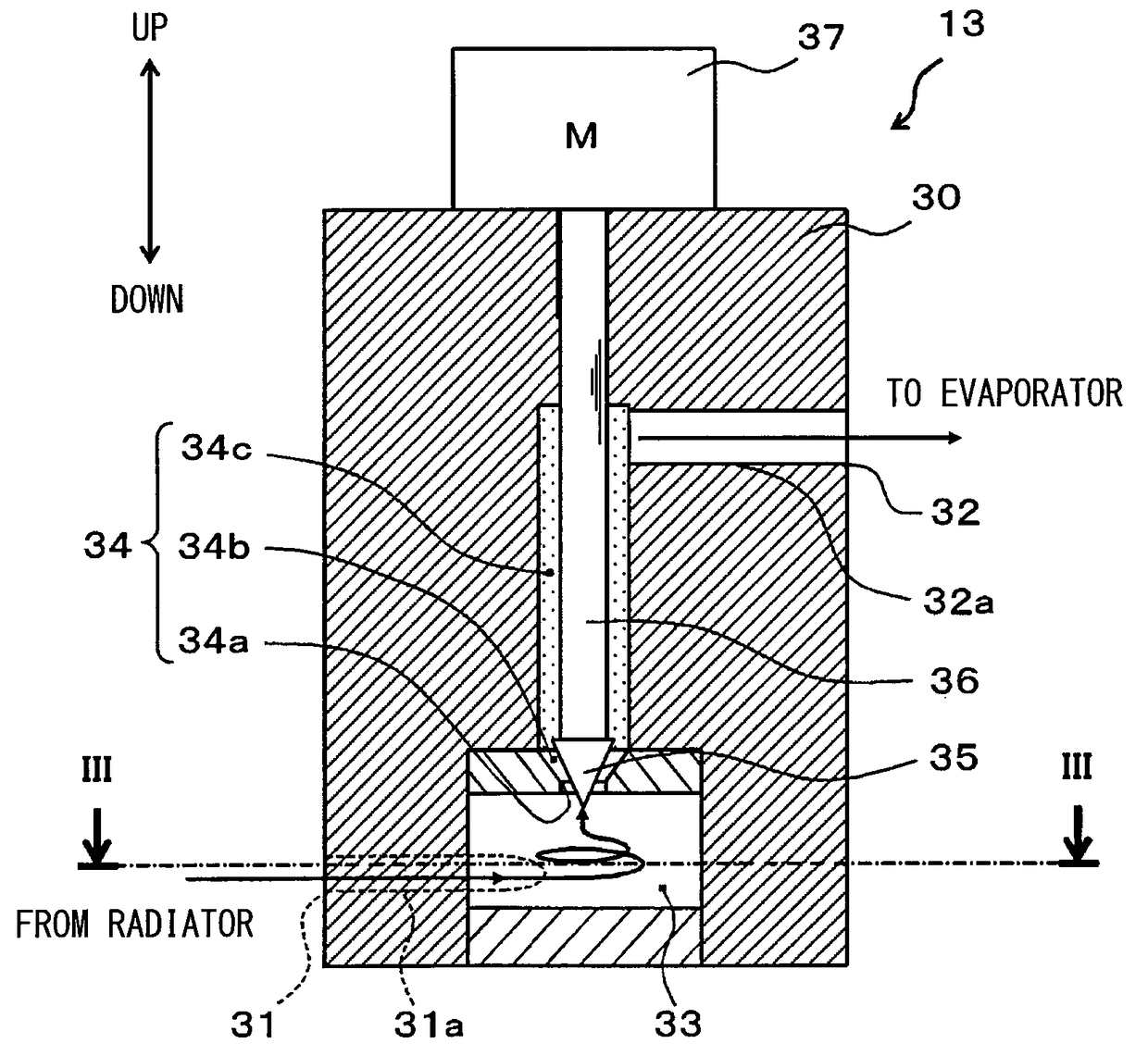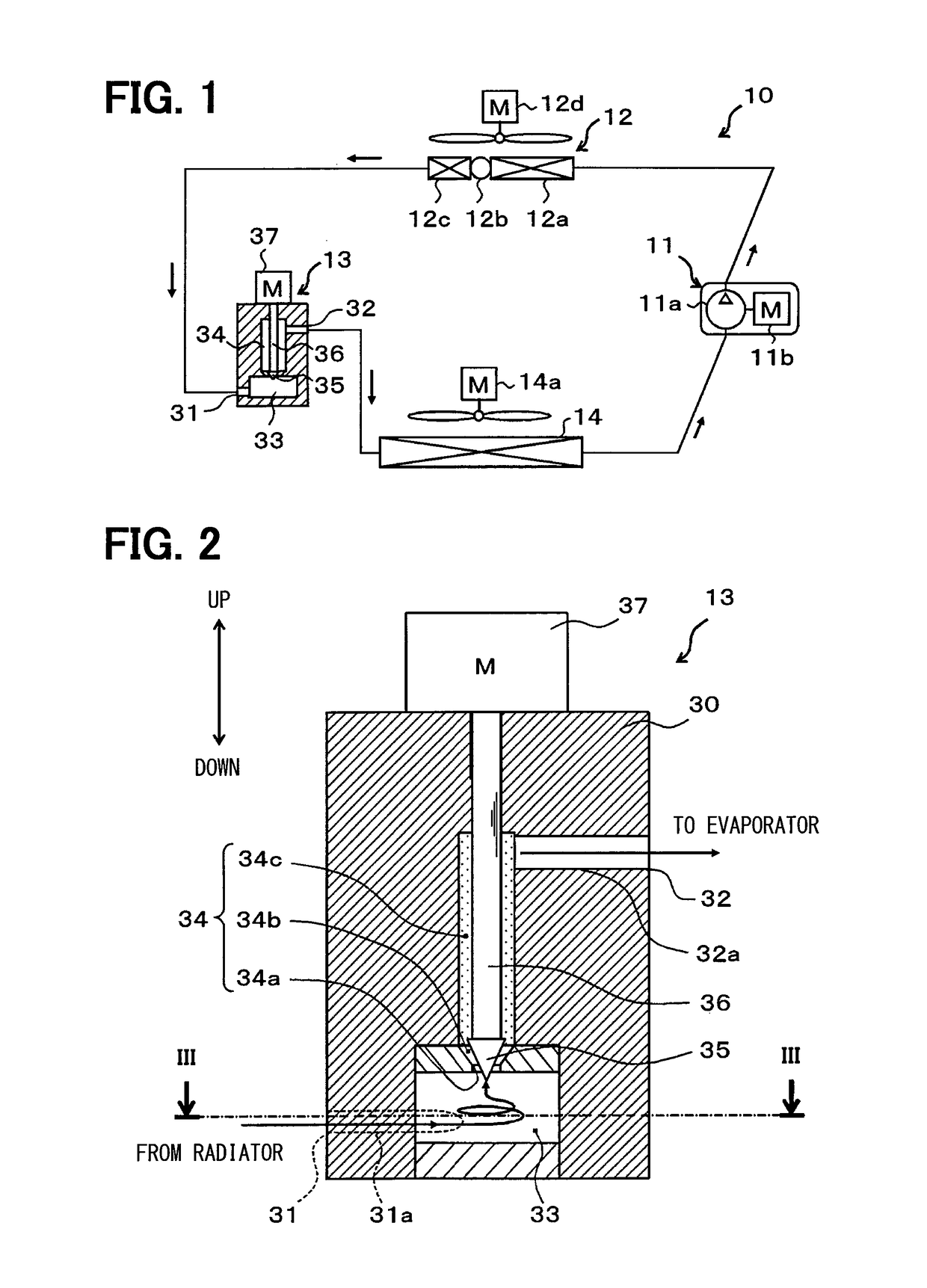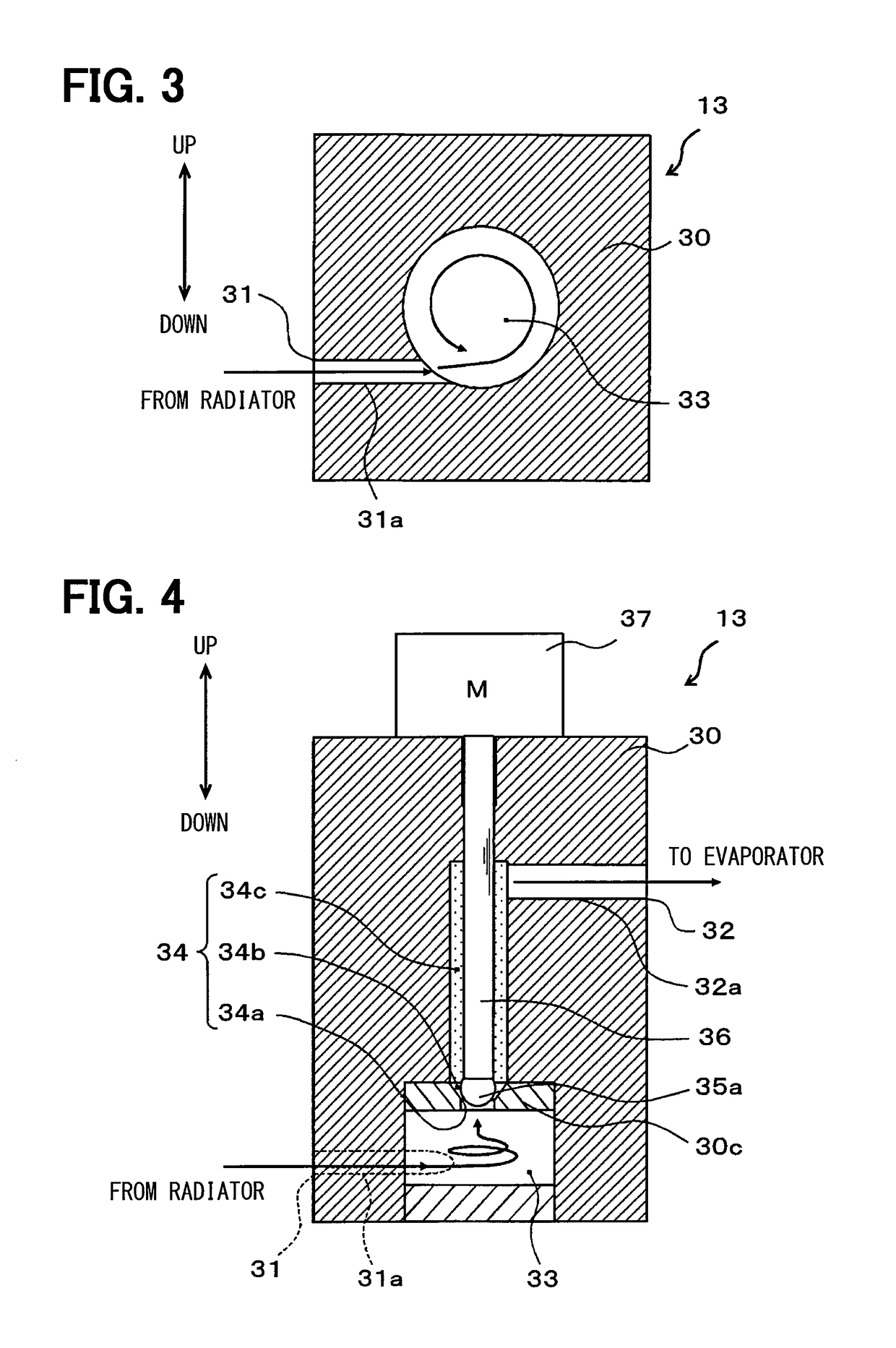Decompression device
a decompression device and liquid phase technology, applied in mechanical devices, lighting and heating apparatuses, refrigeration components, etc., can solve the problems of not being able to reduce the droplet (a drop of liquid phase refrigerant) and the shock wave generated at the time of the start of the boiling of the refrigerant is not easily attenuated, so as to reduce the noise generation of the decompression device as
- Summary
- Abstract
- Description
- Claims
- Application Information
AI Technical Summary
Benefits of technology
Problems solved by technology
Method used
Image
Examples
first embodiment
[0030]A first embodiment of the present disclosure will be described with reference to FIGS. 1 to 3. A decompression device 13 of this embodiment is applied to a vapor compression refrigeration cycle 10 as shown in FIG. 1. Moreover, the refrigeration cycle 10 is applied to a vehicle air conditioning system, and cools air blown into a vehicle interior that is an air-conditioning target space.
[0031]First, in the refrigeration cycle 10, a compressor 11 sucks a refrigerant, raises pressure until the refrigerant becomes a high-pressure refrigerant, and discharges the refrigerant. Specifically, the compressor 11 of this embodiment is an electric compressor in which a fixed-capacity compression mechanism 11a and an electric motor 11b for driving the compression mechanism 11a are accommodated in a single housing.
[0032]Various compression mechanisms, such as a scroll-type compression mechanism and a vane-type compression mechanism, can be employed as the compression mechanism 11a. Further, t...
second embodiment
[0069]An example in which the valve body 35 formed in a conical shape is employed as a valve body of the decompression device 13 has been described in the first embodiment, but a valve body 35a formed in a spherical shape as shown in FIG. 4 is employed in this embodiment. Meanwhile, the same portions as the portions of the first embodiment or portions equivalent to the portions of the first embodiment are denoted by the same reference numerals in FIG. 4. This is also the same in the following drawings.
[0070]Further, a cylindrical space (straight portion) and a circular truncated conical space (tapered portion), which continues from the cylindrical space and is increased in diameter in a refrigerant flow direction, are formed in a passage formation member 30c that forms the most upstream portion of a refrigerant passage space 34 disposed on the outer peripheral side of the valve body 35a. Further, in this embodiment, the smallest passage area portion 34a is formed at a connection por...
third embodiment
[0073]The decompression device 13, which electrically displaces the actuating bar 36 and the valve body 35 by the electric actuator 37, has been described in the first embodiment, but an example in which the actuating bar 36 and a valve body 35c are mechanically displaced by a diaphragm 38b as a pressure responsive member will be described in this embodiment. More specifically, a decompression device 13 of this embodiment is formed of a so-called uniform internal pressure-temperature type expansion valve as shown in a cross-sectional view of FIG. 6.
[0074]First, a second refrigerant inflow passage 31b through which a low-pressure refrigerant that has flowed out of the evaporator 14 flows into the body part, and a second refrigerant outflow passage 32b through which a refrigerant that has flowed out of the second refrigerant inflow passage 31b and flowing out of the evaporator 14 flows into the suction side of the compressor 11 are formed in a body part 30 of this embodiment in additi...
PUM
 Login to View More
Login to View More Abstract
Description
Claims
Application Information
 Login to View More
Login to View More - R&D
- Intellectual Property
- Life Sciences
- Materials
- Tech Scout
- Unparalleled Data Quality
- Higher Quality Content
- 60% Fewer Hallucinations
Browse by: Latest US Patents, China's latest patents, Technical Efficacy Thesaurus, Application Domain, Technology Topic, Popular Technical Reports.
© 2025 PatSnap. All rights reserved.Legal|Privacy policy|Modern Slavery Act Transparency Statement|Sitemap|About US| Contact US: help@patsnap.com



